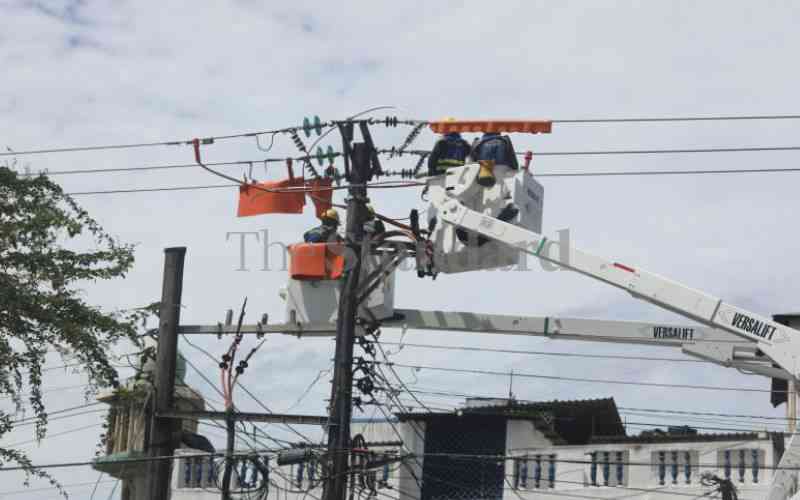
Kenya Power now plans to procure new specialised equipment in a bid to facilitate a faster response to increasing blackouts in the country.
The embattled State-controlled electricity distributor, which is currently seeking a substantive chief executive, said in internal documents it plans to urgently purchase an emergency restoration system (ERS towers) amid the increasing frequency of nationwide power outages.
"Kenya Power invites tenders from interested bidders for the provision of supply of Emergency Restoration Towers (ERTS), Tension Stringing Equipment and Equipment for Technical Service," said Kenya Power.
ERS towers are modular aluminium towers, used to quickly restore power on damaged power transmission lines in the developed world as well as to facilitate scheduled maintenance work with minimal power interruption.
A small team of six technicians can erect a 30-meter-long tower complete with insulators and anchors within three hours, according to some manufacturers of the equipment.
Existing towers
The transmission tower systems are versatile as they can be used for restoring power following a disaster (flood, hurricane, war) or conducting scheduled maintenance work on existing towers without major interruptions as temporary line extensions.
They are fast and efficient since no civil engineering work is required to install them, experts say. Kenya Power is Kenya's sole electricity distributor and the bulk of its power comes from Kenya Electricity Generating Company (KenGen), which is the main producer.
Frequent blackouts due to supply shortfalls and ageing infrastructure have forced most businesses and wealthy customers to have standby generators.
Kenya Power, which is struggling with losses and mounting debt, has been under pressure from manufacturers to supply reliable and affordable power to businesses.
The government previously rejected proposed laws that require Kenya Power to compensate businesses whose power is cut off for more than three hours within a day.
Business leaders say incessant blackouts are limiting economic growth.
Manufacturers, commercial building owners, warehouses, hospitality establishments like hotels, supermarkets, hospitals, educational institutions, farmers and other small businesses like salons and barber shops need constant electricity supply and an extended outage usually translates into losses and additional expenses from using generators.
Last Sunday, the country was plunged into a nationwide blackout - the latest of many - lasting several hours, which was linked to a fault on one of the key transmission lines, according to Kenya Power.
"Initial reports indicate that the outage was caused by a fault that occurred on the Suswa-Loyangalani high-voltage power transmission line," Kenya Power said in a statement.
Outages
Last month, another blackout was witnessed across the whole country.
At the time, Kenya Power linked the eight-hour power outage to planned routine network maintenance.
And in January last year, the country was again plunged into darkness for several hours after a high-voltage transmission line connecting the capital Nairobi to a generation plant broke.
But authorities opened an investigation, saying some Kenya Power executives had neglected their duties, leading to the collapse of the towers. Three senior managers were subsequently charged with sabotage and negligence over the outage.
Earlier in May 2020, there was a similar nationwide outage after a section of a high-voltage line that transmits power to Nairobi from the Olkaria geothermal power plants in Naivasha broke.
Experts say Kenya Power needs to spend billions of shillings to upgrade and expand its ageing network in the coming years and revamp the dilapidated transmission network to keep up with growing demand and end erratic power supply.
Several companies, universities, and factories have ditched Kenya Power in favour of solar systems for internal use to ensure reliable supply and reduce operational costs.
 The Standard Group Plc is a multi-media organization with investments in media platforms spanning newspaper print
operations, television, radio broadcasting, digital and online services. The Standard Group is recognized as a
leading multi-media house in Kenya with a key influence in matters of national and international interest.
The Standard Group Plc is a multi-media organization with investments in media platforms spanning newspaper print
operations, television, radio broadcasting, digital and online services. The Standard Group is recognized as a
leading multi-media house in Kenya with a key influence in matters of national and international interest.











